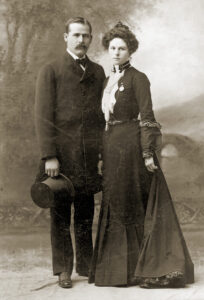Down the Common, by Ann Baer, M. Evans and Company, Inc., 216 East 49th Street, New York, New York 10017. 212-688-2810. $21.95 hardcover.
The Letter-Box department of our April/May issue featured a note from Kenneth Miller of Rochester, Minnesota (‘A Picture of Life in a Medieval Village’, page 6) in praise of a book by Ann Baer, titled Down the Common. A short time after publishing Mr. Miller’s letter we received a copy of the book from Ms. Baer’s publisher, who told us that our brief mention had resulted in a flood of orders. Mr. Miller was on to something here, it seemed, and so we turned to the book for a closer look.
Down the Common, originally published in England under the title Medieval Woman: Village Life in the Middle Ages, is the story of Marion, the wife of a village carpenter, who lives in a world where survival is the primary pastime and every necessity of life is obtained only through hard labor and cooperation among neighbors. The book consists of 12 chapters, each detailing the events of a single day throughout each month of a typical year. Exactly which year the author has set her novel in, as well as the precise location of Marion’s village, is intentionally omitted. The characters in the story have no sense of their own place in either the chronology or the geography of medieval England, and in truth, they represent all villages and all villagers throughout the age.
Down the Common uses fiction to describe the real-life conditions of rural medieval life. But unlike most novels, it is essentially plotless, builds to no great climax, and features no really gripping drama. And this is exactly the point. It is the story of the masses of anonymous medieval peasants whose mode of existence offered no chance for dreams of a better life, and no escape from their day-to-day existence. This was a time when happiness was measured by balancing the amount of flour in the bin against the number of days left until spring, and when the arrival of a travelling tinker became one of the year’s highlights. But even these little pleasures could be overshadowed by constant reminders of death, which was never farther away than the next crop failure or a minor cut that could easily lead to a fatal infection.
Against this bleak life, however, the perseverance and Marion and her friends in the face of their drudgery provides a heroic example of the potential of the human spirit, and a true sense of appreciation for the accomplishments of those ‘backward’ medieval ancestors of ours.
Bruce Heydt




